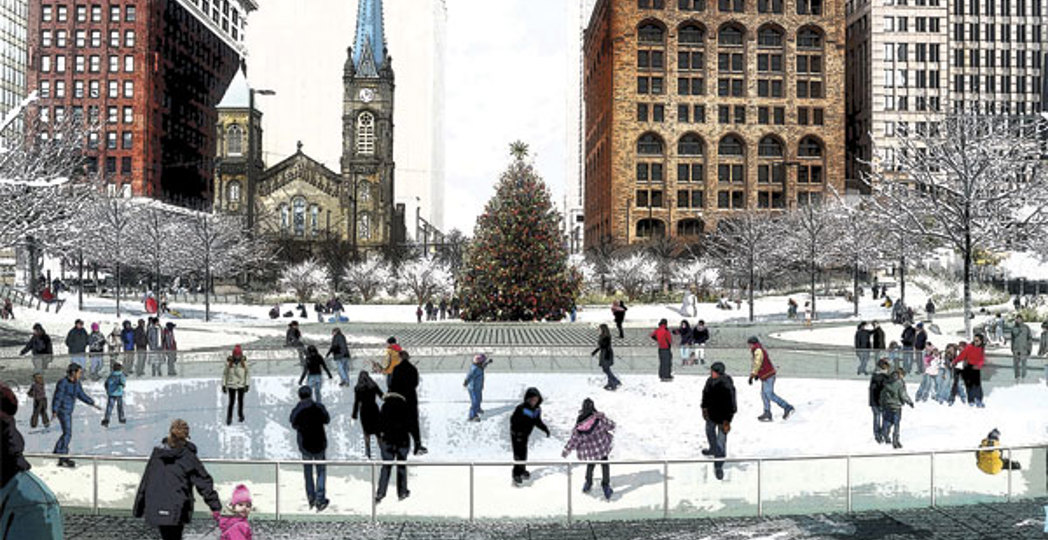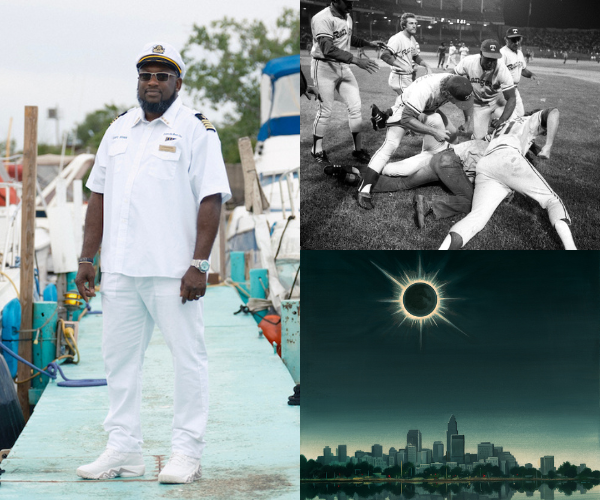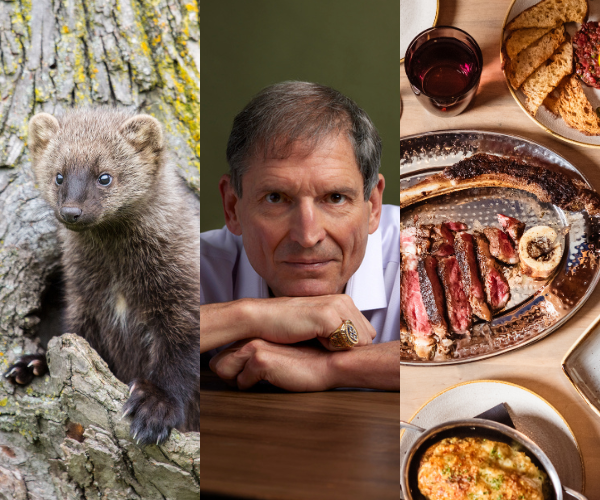Why Are We Such Cold Weather Wussies?
by Alex Baca | Jan. 9, 2017 | 7:00 PM

Group Plan Commission
On a sunny Sunday in October, I was brunching with friends. We were crammed around a table at Prosperity Social Club in hoodies, jean jackets and beanies. It was warm and fuzzy, even convivial, until one of my companions threw ice on the party. “It’s getting cold,” he said. “Time to shut down.”
With that reminder of what was to come, we glumly returned to our pierogies, fried chicken and eggs, shivering a bit at the thought of having to take full bellies out into 40-degree weather. The way we bemoaned the not-quite-winter, you’d think that October’s default setting was polar vortex.
Compared to most of you, I’m warm-blooded. I grew up in Maryland and have previously called Washington, D.C., and San Francisco home. Neither city is known for particularly frigid temperatures.
And yet, upon moving here, I’ve adopted a particular social tic. We Clevelanders, who claim to be hardy, rugged and self-sufficient in the face of adversity, complain endlessly that winter weather is just too much.
It’s a mentality that I deal with professionally, too, as the general manager of UHBikes, Cleveland’s new bike-sharing system. Unlike buses or trains, our ridership is almost totally dependent on the temperature. When it’s nice out — and we do have really glorious, mild weather in Cleveland for sustained stretches — we hustle to keep bikes in the racks. But when it dips below 50 degrees, Clevelanders hang up their saddle seats.
“One of the biggest challenges about winter is Cleveland summer,” says Brian Horsburgh, executive director of Brite Cleveland, which runs the February Brite Winter festival. Due to Cleveland’s comparatively easy-going summers, winter gets short shrift, he says.
“It’s doldrums,” says Horsburgh. “There’s not a lot going on between New Year’s and St. Patrick’s Day.”
That’s the whole point of Brite Winter: Get people outside during colder months with an event to fill the gap between fall and spring. But, as Horsburgh points out, results may vary. Sometimes, bands can play outside, and sometimes they need to play in heated tents to keep their equipment from freezing. Sometimes it’s so cold the beer freezes, and sometimes it’s so warm that the ice keeping it cool melts.
“One thing that’s true about northern Ohio is that it’s varied,” says WKYC chief meteorologist Betsy Kling. The perception about Cleveland’s winters often depends on who you ask and where you’re asking. “The forecast can be completely different on the West Side and the East Side on the same days,” she says.
This leaves Cleveland with a winter that, on some days, is no less brutal than that of our peers farther north. But overall, our winters are better described as “unpredictable” than “unimpeachably cold.“ Even when the mercury is forgiving, it just seems colder.
Unlike places with a less bipolar winter personality, it’s likely why Clevelanders can’t fully commit to braving even mild freezes.
Our flimsy memories don’t help either. One snowfall, it seems, is the equivalent of amnesia. “When we have a snow event, people will say, ‘This is the worst snow I’ve ever seen,’ ” says Kling. “I’ll say, ‘Oh, weren’t you here in 1978? Weren’t you here in 2004-05, our snowiest winter on record?’ ”
When history is forgotten, the flux in conditions gives the perception, but not the reality, of severe weather.
“If you’re clearly centered in a winter culture, there’s no debate, and it’s a brand and identity,” says David Jurca, associate director of Kent State University’s Cleveland Urban Design Collaborative. “But when you’re in the middle, it’s harder to embrace an identity that seems dichotomous.”
In response, the benefits of colder weather get downplayed, he says. Folks simply don’t approach it with the same pragmatic view for activity that they might in warmer months.
“I think that builds a sort of denial and an ironic complaint about it too,” he says.
To tackle the hibernation instinct, Jurca started Coldscapes in 2013, an initiative that encourages designs of winter cities that draw people outside. He’s full of strategies that could create a more friendly wintertime environment by being more considerate of how we build.
For instance, downtown buildings are mostly glass and light-colored stone, which wash out on gray days. But simply using colored lights and cold-weather plants, such as holly, decorative cabbage or witch hazel, could liven it up. More importantly, Jurca would like designers to imagine what their projects will look like outside of 75 degrees and sunny. “With this medium of snow, wind, weather and cold, how can we make this really cool? With a pop of color in this location, how can it become even more magical than in the summer?” he asks. “How can we work with water when it turns to ice?”
Those questions could be included in the building code, ensuring that any Cleveland project is built with consideration for year-round use. Jurca points to the Canadian city of Edmonton, where winter design guidelines are being created that would ensure development projects work for all seasons: blocking wind, getting more exposure to sunshine, using lights to energize the gray winterscape and providing infrastructure that supports a desirable winter life. It would not be a stretch for Cleveland to require a similar framework for designers and builders.
But it’s on us to see winter coming and run out to meet it. It might seem like a tall order to willingly subject yourself to the whims of Northeast Ohio’s weather. Yet there’s societal merit in braving the tundra together.
Events like Brite Winter are a good start, because they get people to freeze collectively. “There’s a novelty to it,” says Jurca. “I think it builds quick social bonds between people when you face adversity together or work on a project together.”
But if we want to break the outsize grip of winter on our region, we must embrace it in the little ways too. Northern American cities have a lock on this, with their Scandinavian sensibilities and backyard saunas. Between Brite Winter, Winterfest, the Public Square skating rink, the Hingetown Hygge and Kurentovanje, which celebrates Cleveland’s Slovenian population, we have a snowdrift’s worth of first steps already in place.
Step two should be approaching winter the same way one would in the fall or spring — taking walks, boiling in a sauna or, say, riding a bike.
Which puts me in a money-near-mouth sort of spot. Do I, or don’t I, keep the bike-share system open year-round?
When we launched in July 2016, it was assumed that we would shut UHBikes down for the winter. But after some back and forth, we’ve decided to stay open. I know my team can handle keeping our stations clear and our bikes in great working order, even as slush turns to ice.
But it’s on Clevelanders to make our efforts worthwhile. The red bikes are there, but someone has to be outside to ride them. So defy the season. Complain a little, sure. But don’t let a whiff of cold stop you. Bundle up and get out there.
Trending
-
1
-
2
-
3
-
4
-
5










